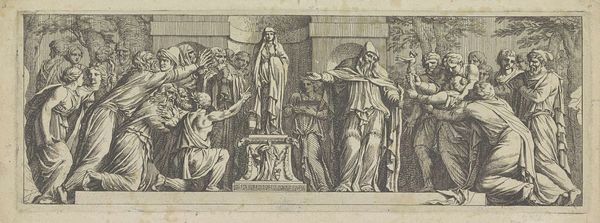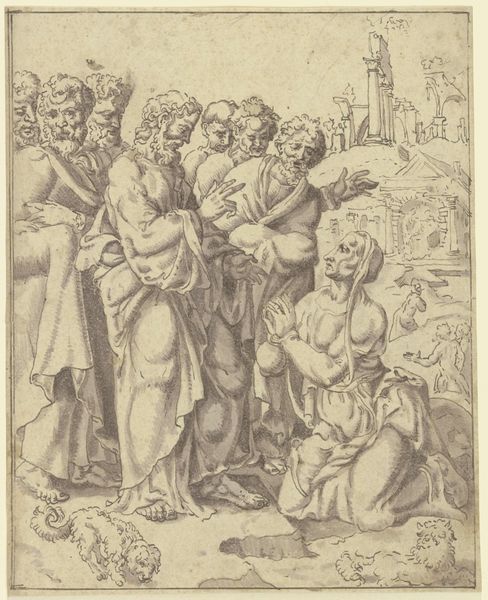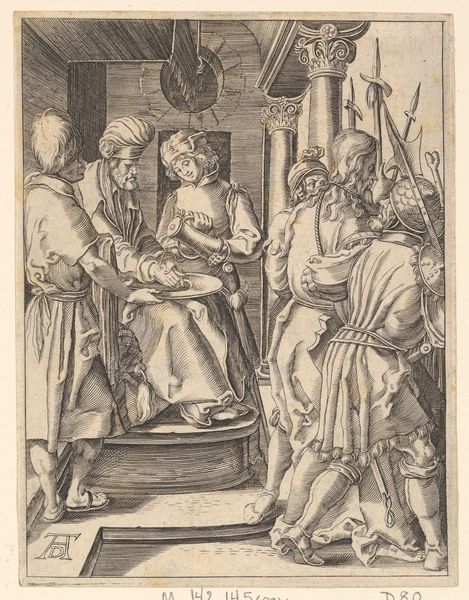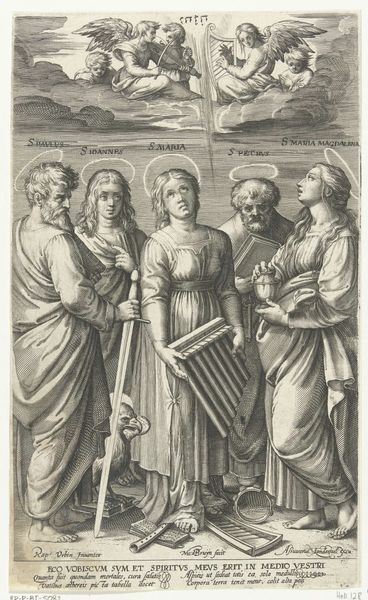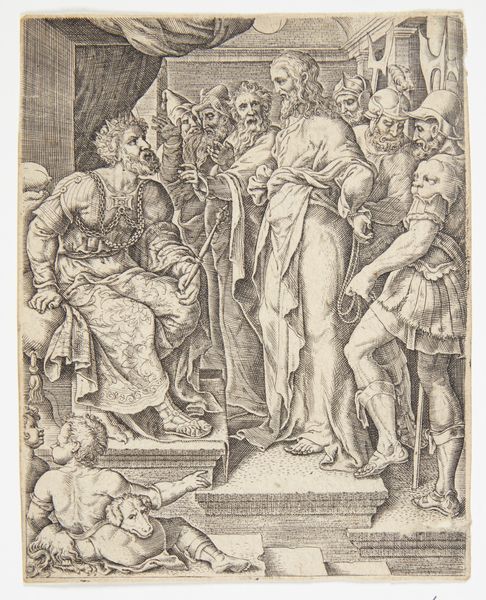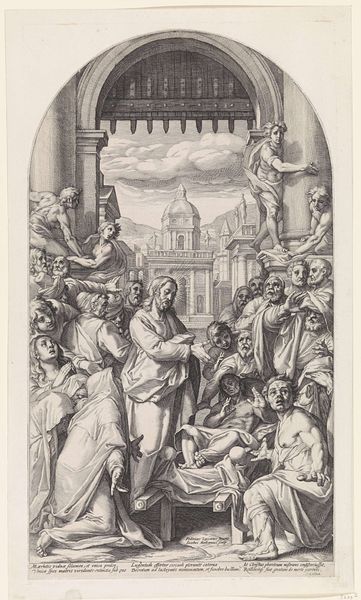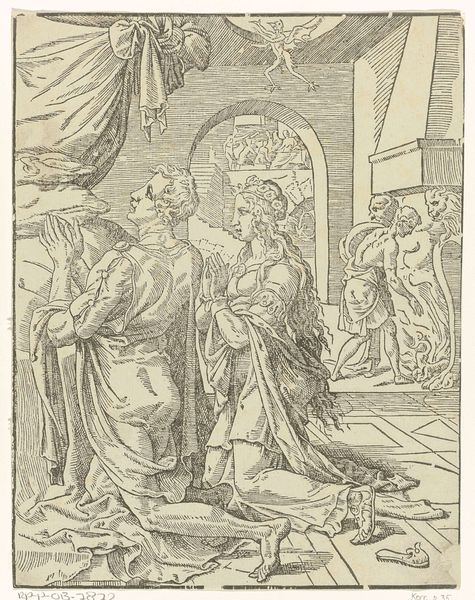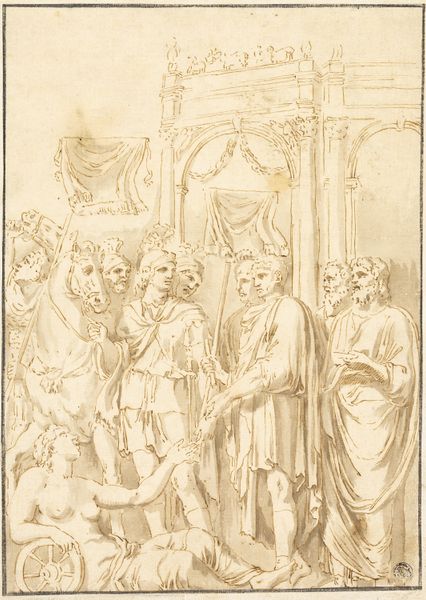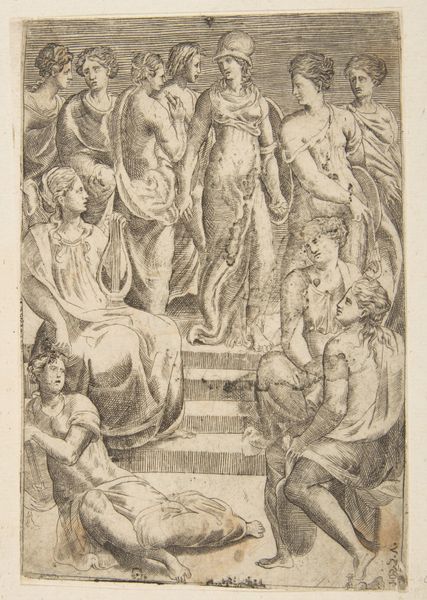
print, engraving
# print
#
figuration
#
pencil drawing
#
history-painting
#
academic-art
#
italian-renaissance
#
engraving
Dimensions: height 160 mm, width 120 mm
Copyright: Rijks Museum: Open Domain
Curator: My first impression? It’s a stage, isn’t it? Stark and poised, like a scene from an ancient drama unfolding. Editor: Indeed. We're looking at "Rechter die een vonnis wijst," or "Judge passing a sentence," a print by Battista Franco, created sometime between 1520 and 1561. Curator: So, Franco’s grappling with justice, or the performance of it, at least. Look at the robed figures—the women down front seem so… burdened, like symbols of compassion, while the guys up top are caught up in some power-play of their own. It reminds me of freeze frame in a heated movie scene. Editor: Precisely, the print evokes profound concepts tied to order and authority. The judge, positioned prominently on the dais, becomes a focal point through which cultural memory is reflected. Notice the architectural backdrop, typical of the Italian Renaissance, and how it frames the scene, lending a gravity. It's like justice isn't dispensed but performed. Curator: Performed is the right word! It's like those austere Roman statues – the blank eyes staring off at some point we can't access anymore. But there’s an agitation there, too. See the men’s gestures and grimacing facial features in the background. Are they in disagreement about the judgement? Is one covering up a disagreement of their own? Editor: That kind of ambiguity can actually work symbolically. The figures gathered around, some appearing contemplative, others seemingly concerned, suggest a complex tapestry of societal attitudes towards justice. The symbols—the garments, gestures—speak to how judgement shapes civilization. We find these types represented over centuries, constantly evolving in ways both subtle and profound. Curator: I'm struck by the shadows and the hatching of the lines. They amplify a tense mood and sense of urgency in something created over 450 years ago! To think, even in Renaissance Italy they had something to say about jurisprudence. It begs the question what they believed was essential in delivering justice. Editor: A very fitting thought! Through careful consideration of these historical symbols and their psychological echoes, we arrive at a richer comprehension of justice through Battista Franco’s print. We learn of our continuing, though maybe unconsciously, wrestling with fundamental questions of what constitutes fairness, reason and humanity itself.
Comments
No comments
Be the first to comment and join the conversation on the ultimate creative platform.
